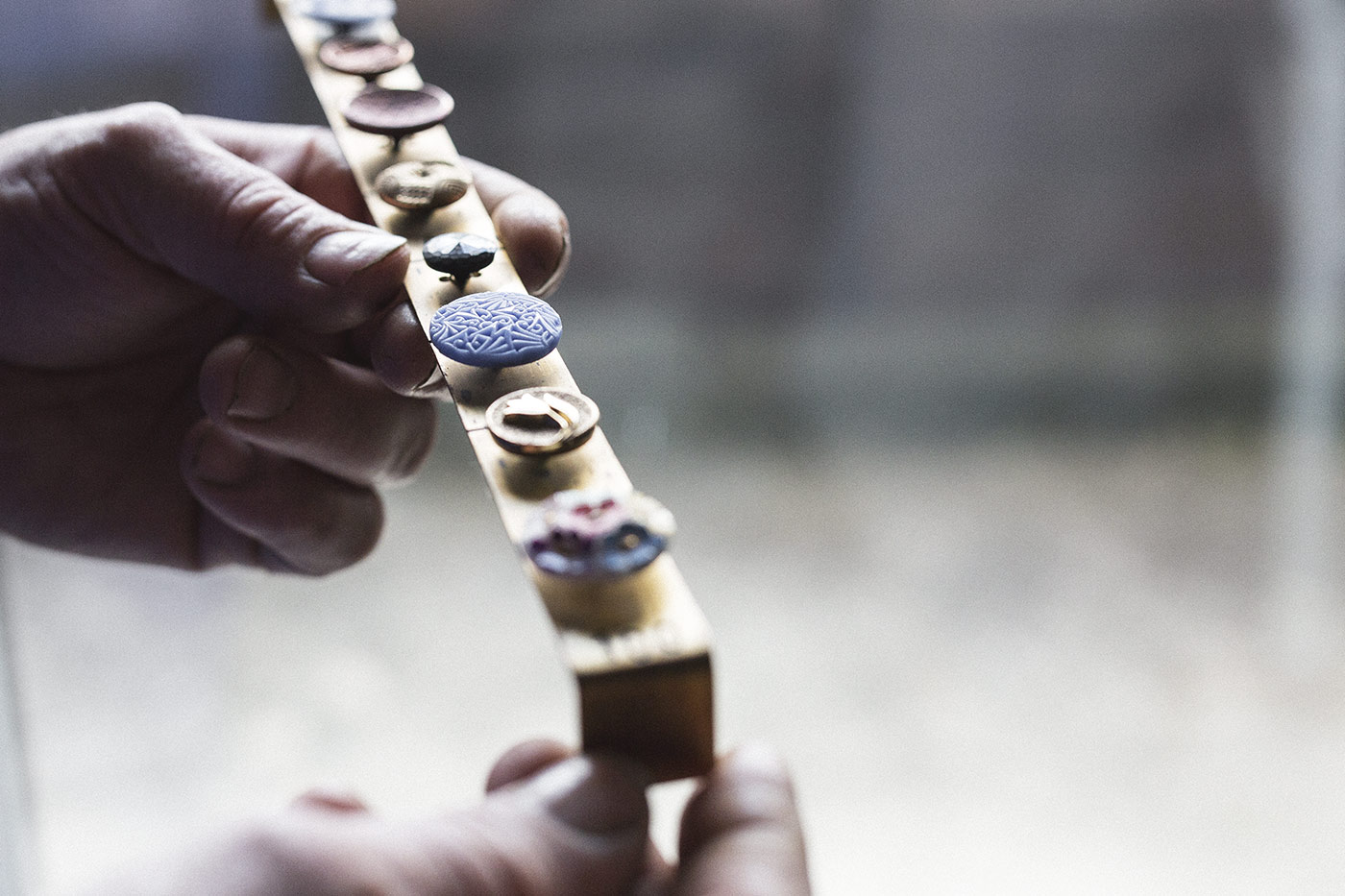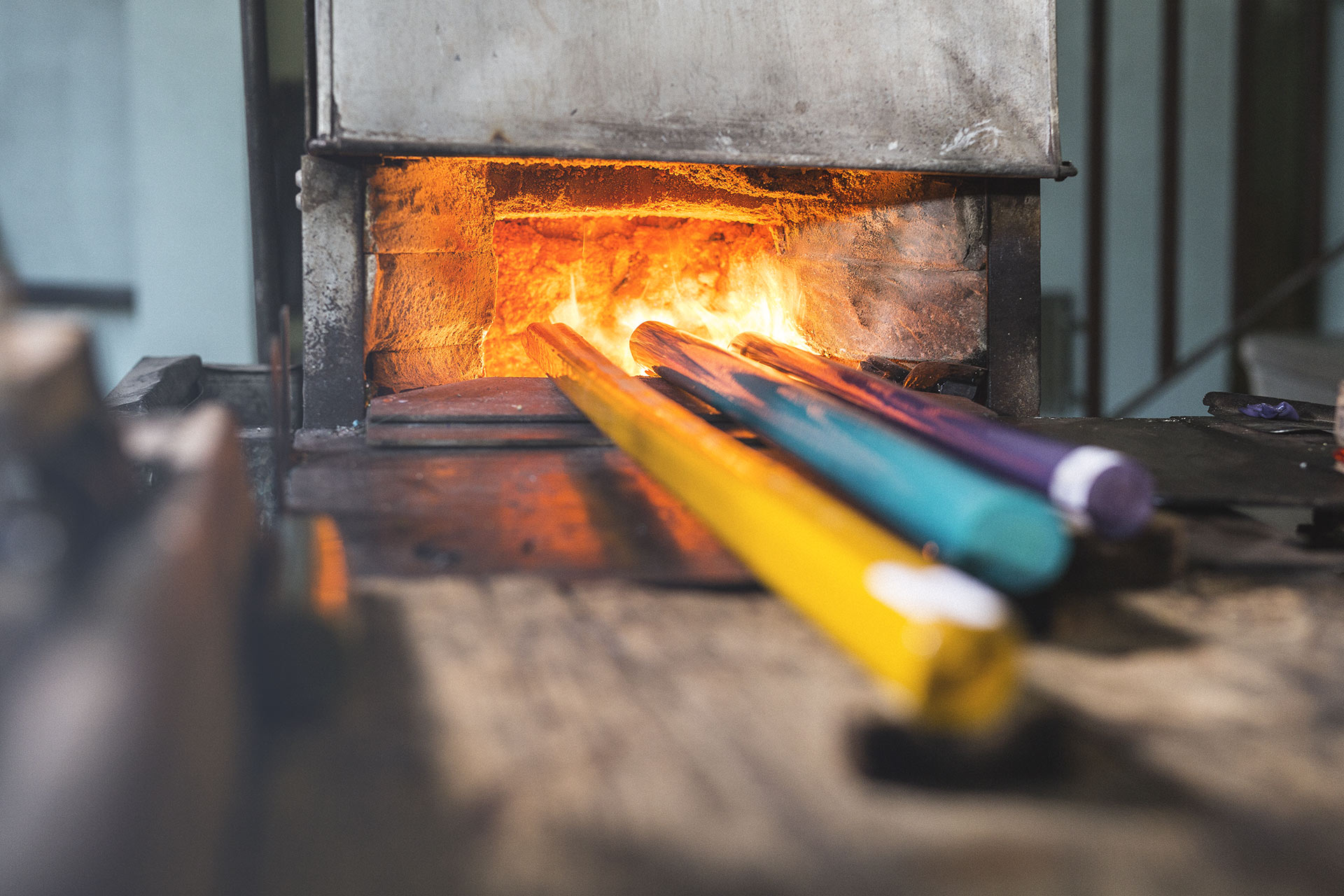GLASSWARE MANUFACTURING
WE ARE PROUD OF OUR CRAFT: WE APPLY EXPERT KNOWLEDGE AND SKILL TO PRODUCE GLASS BUTTONS, JEWELLERY ELEMENTS AND BEADS BY HAND.
Our craft is part of a long tradition which is still significant in jewellery production. Glass products have always been popular for their uniqueness and ability to hold their value. Not only that but a product such as a glass button is both practical and decorative, a beautiful addition to the item of clothing it fastens. This page provides an insight into how we manufacture glass products using the methods of glass moulding and glass planing. Join us to discover a world of fire, glass and sculpture.
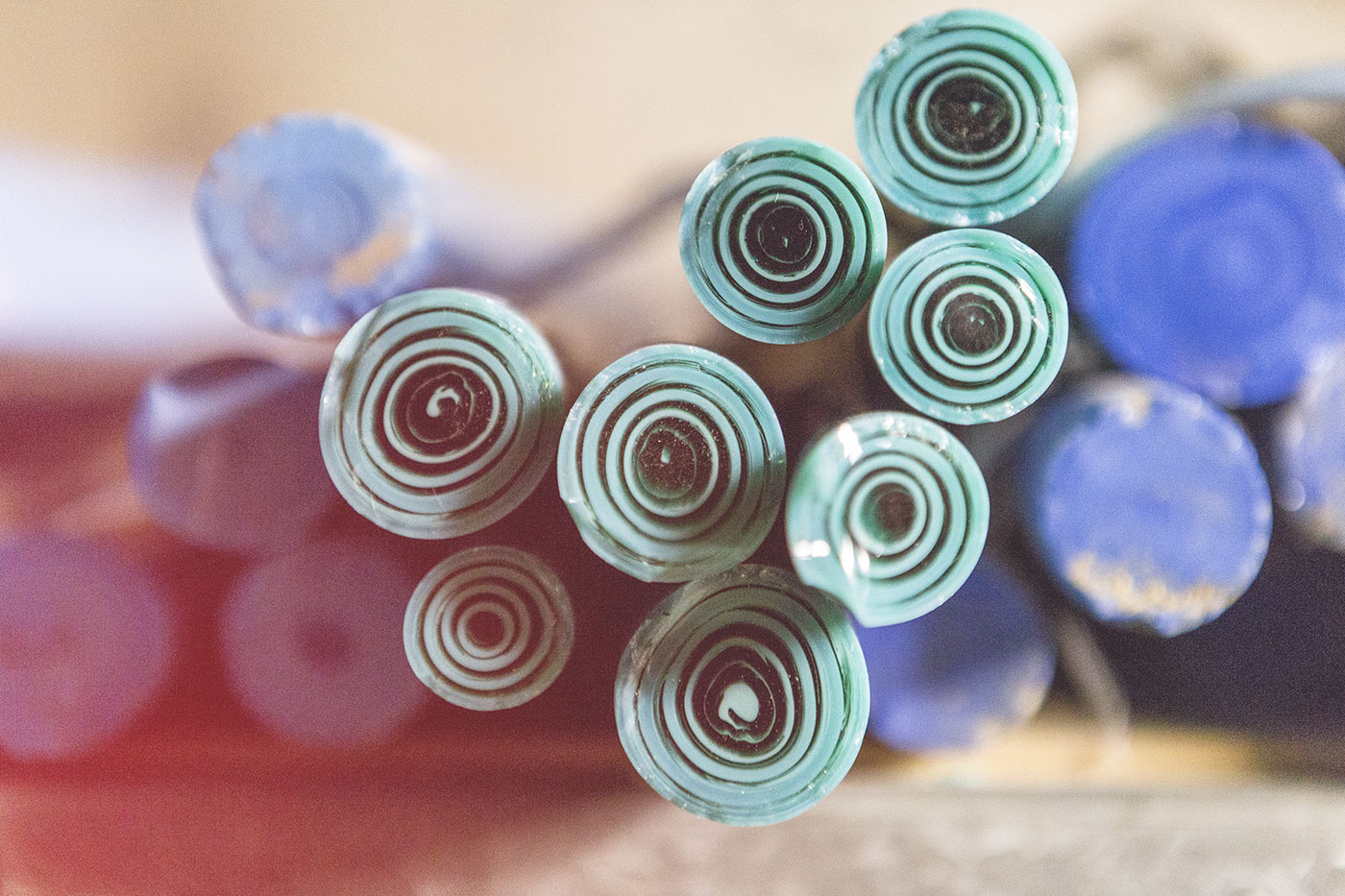
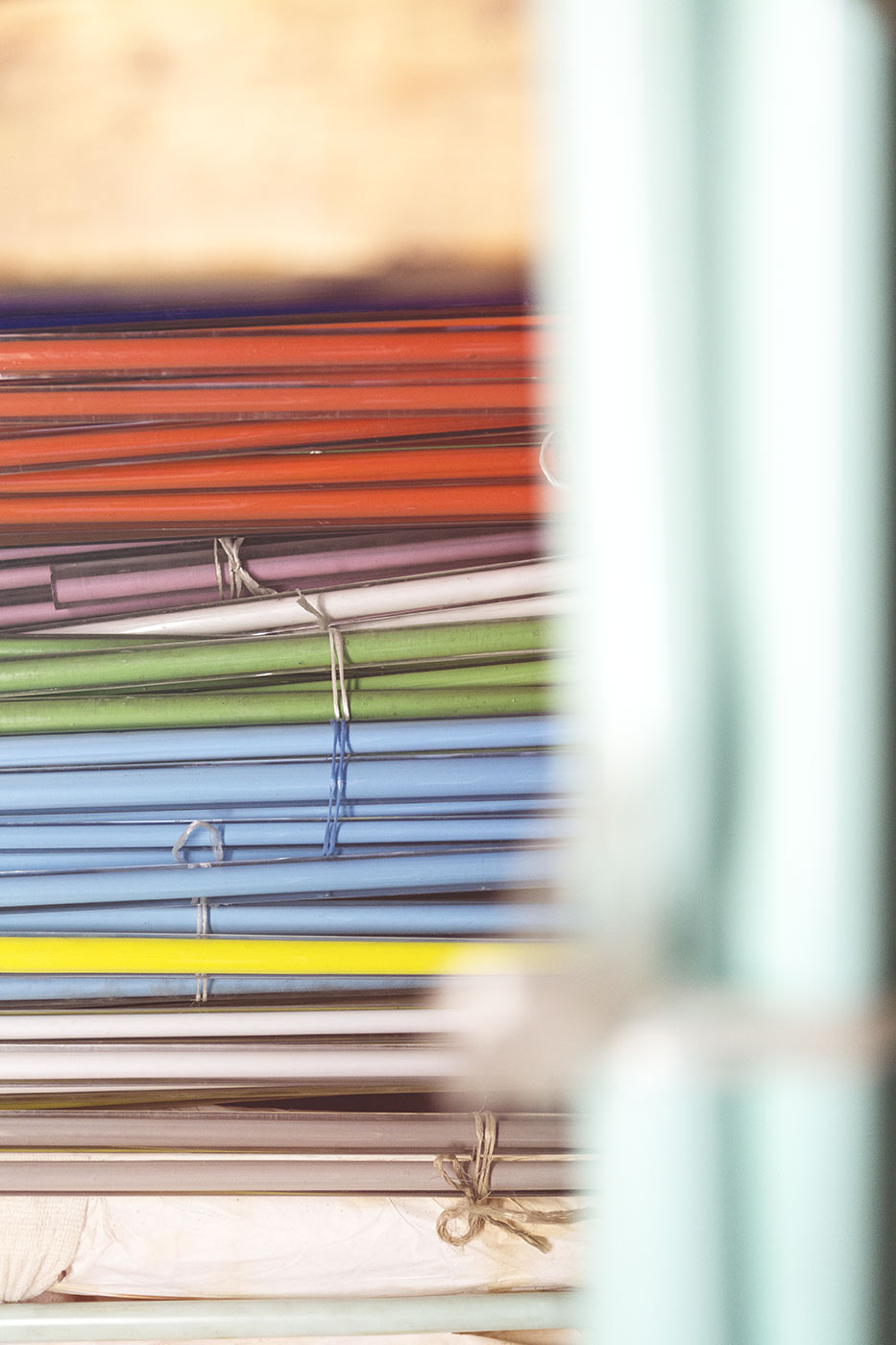
Raw materials
Glass rods
The raw materials for our products are 1 m glass rods with a diameter of 25–30 mm. They are made by melting down silica sand, soda ash and limestone. Various colours can be achieved by adding transition-metal or rare earth-element compounds.
SEVERAL GLASSWORKS SUPPLY OUR GLASS
- Percioso / Ornella
- Schott
- Spezialglashütte Kugler Colors
We also work with glass rods from old stock, supplied by glassworks which no longer exist. That means we are able to offer our customers limited-edition products for their exclusive projects.
Our range includes around 200 standard colours, which are divided into subgroups: transparent, opaque (non-light permeable) and opal (milk glass). These are complemented by multi-coloured glass rods which create interesting effects.
OUR TOOLS
The appropriate press mould, or ‘kappl’, is needed to fashion a glass bead, button or jewellery stone. We currently have around 12,000 different kappls in our workshop.
They are made from steel, tool steel or nickel depending on their use. Most have interchangeable moulds, though some are solid tongs, also depending what is needed.
A kappl can cost between €300 for a relatively simple finish and €1,500 if more intricate work is required. They have a limited lifespan and must eventually be replaced due to wear.
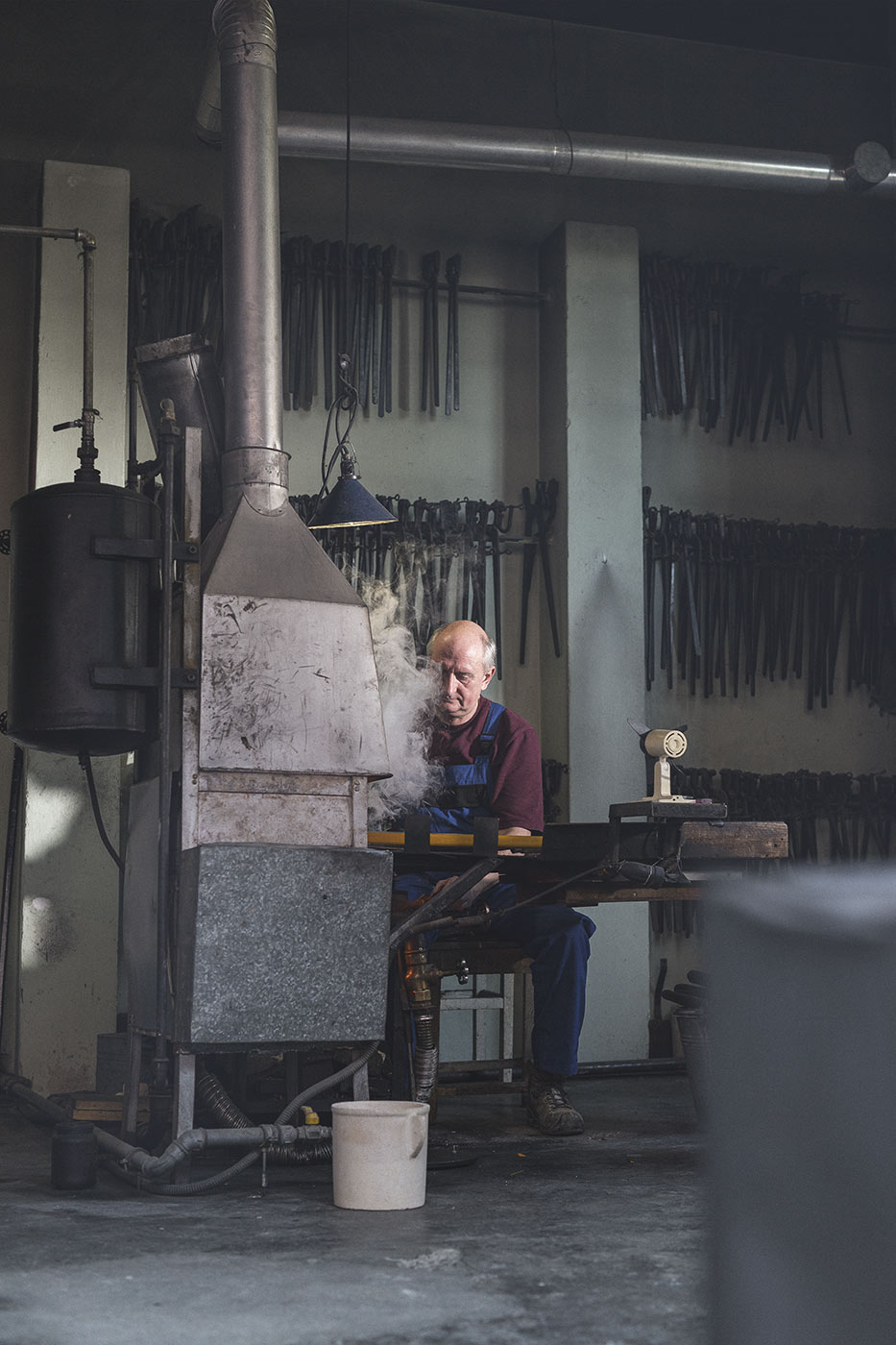
OUR WORKSPACE
We build our own glass kilns and heat them to around 900–1100 ºC at one end with gas or oil. This heat is maintained until the glass is viscous so that it can be pressed in the mould.
The soft tip of the glass rod is then pressed in a metal mould (kappl). Depending on the size of the product, the glass elements may be pressed several times. In order to achieve a flawless finish, it is vital that this pressing occurs at just the right time.
Have you ever wondered where the hole comes from in your glass bead, button or sew-on stone? It is made during the moulding process using a steel pin, which is pushed through the viscous glass while it is in the kappl.
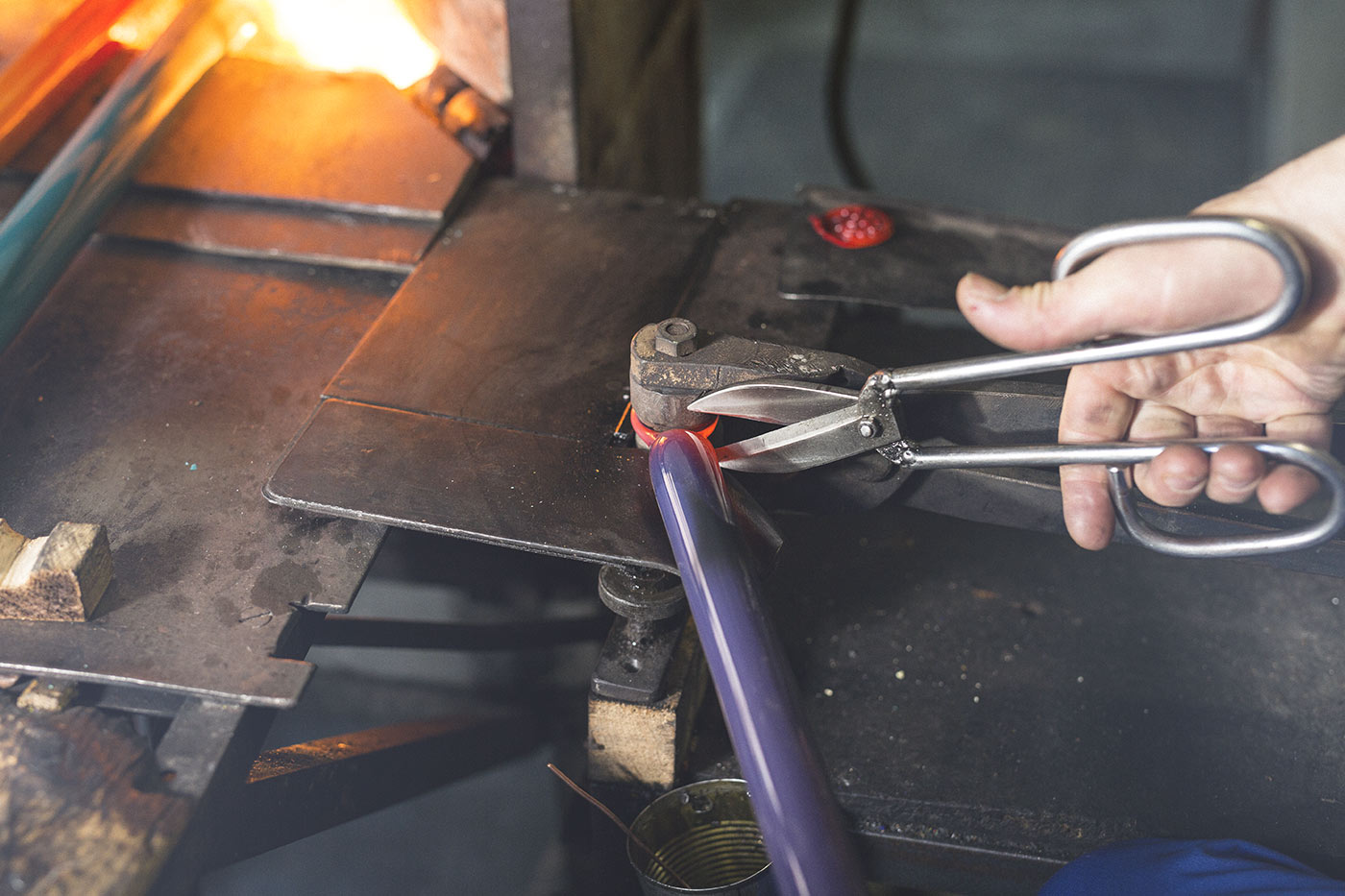
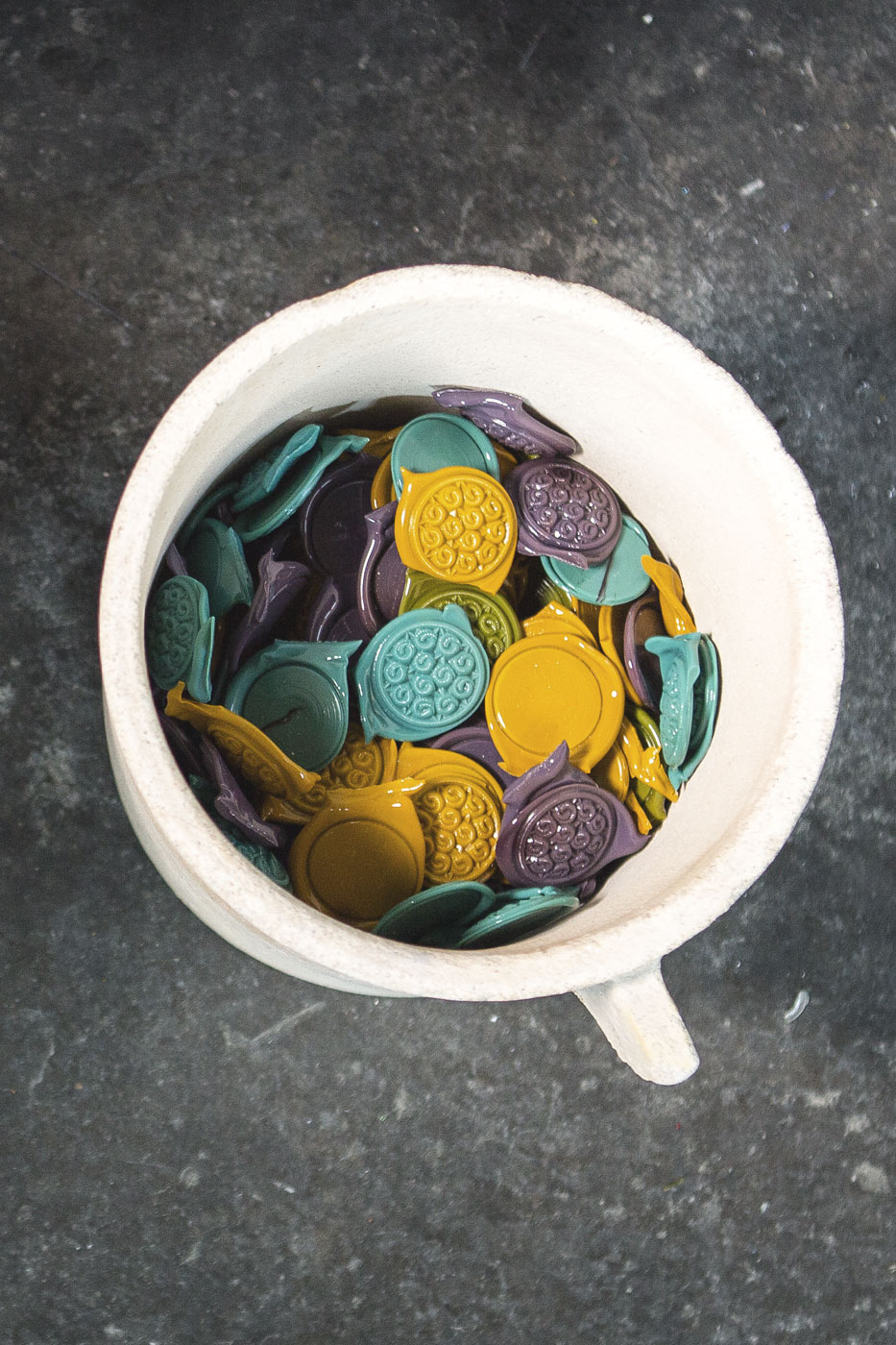
After moulding, the hot glass elements are placed in a preheated pot so that they cool slowly (over up to 24 hours). If they cool too quickly, they experience forces which form fissures in the glass causing it to break.
Only once the glass elements have completely cooled can work continue.
The next step is known as ‘shearing.’ Surplus glass is removed using two steel blades turning in opposite directions.
Once this is complete, smoothing can take place. The edges of the glass element are still sharp and have to be polished smooth using a diamond grinding wheel and water.
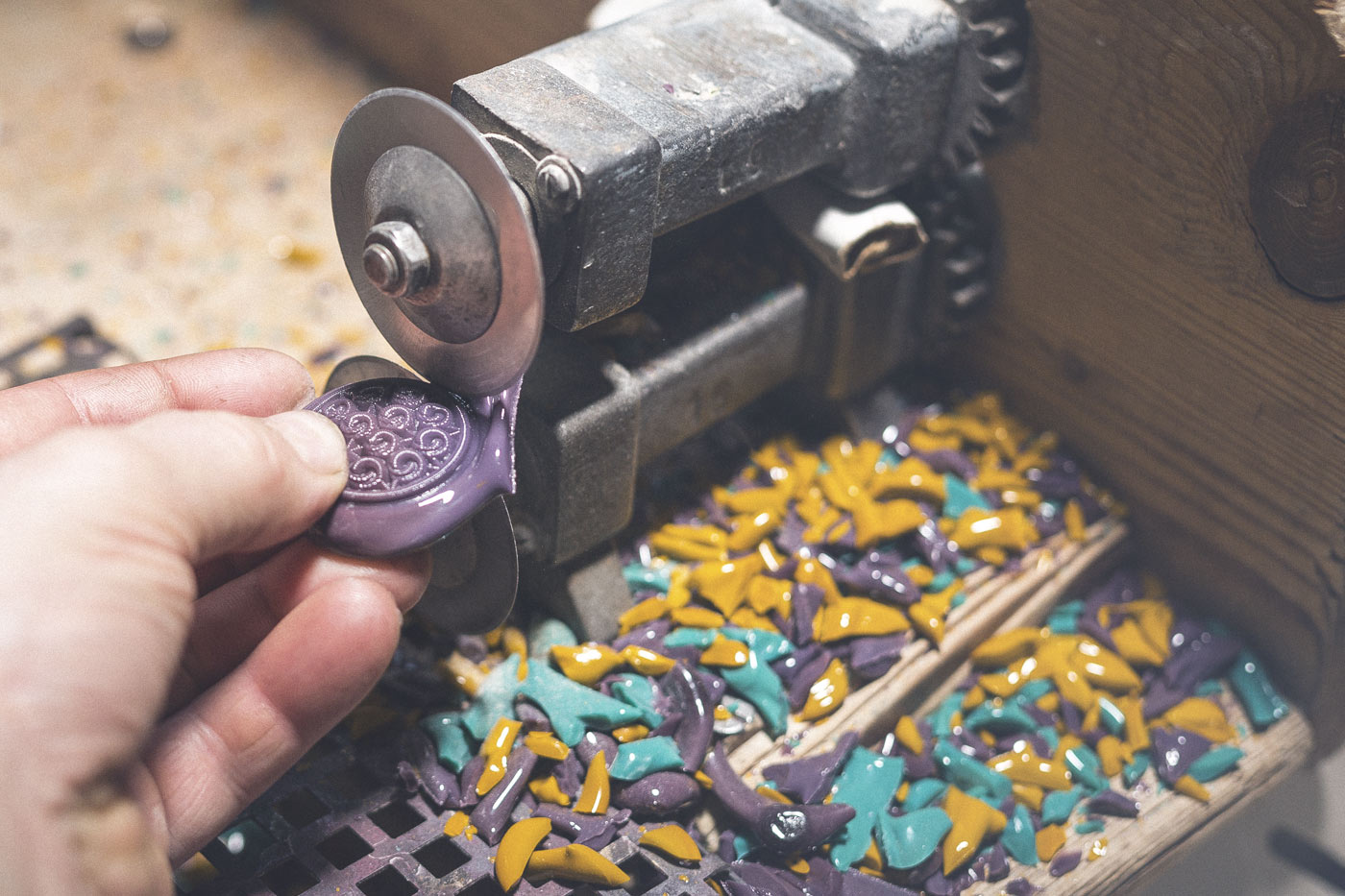
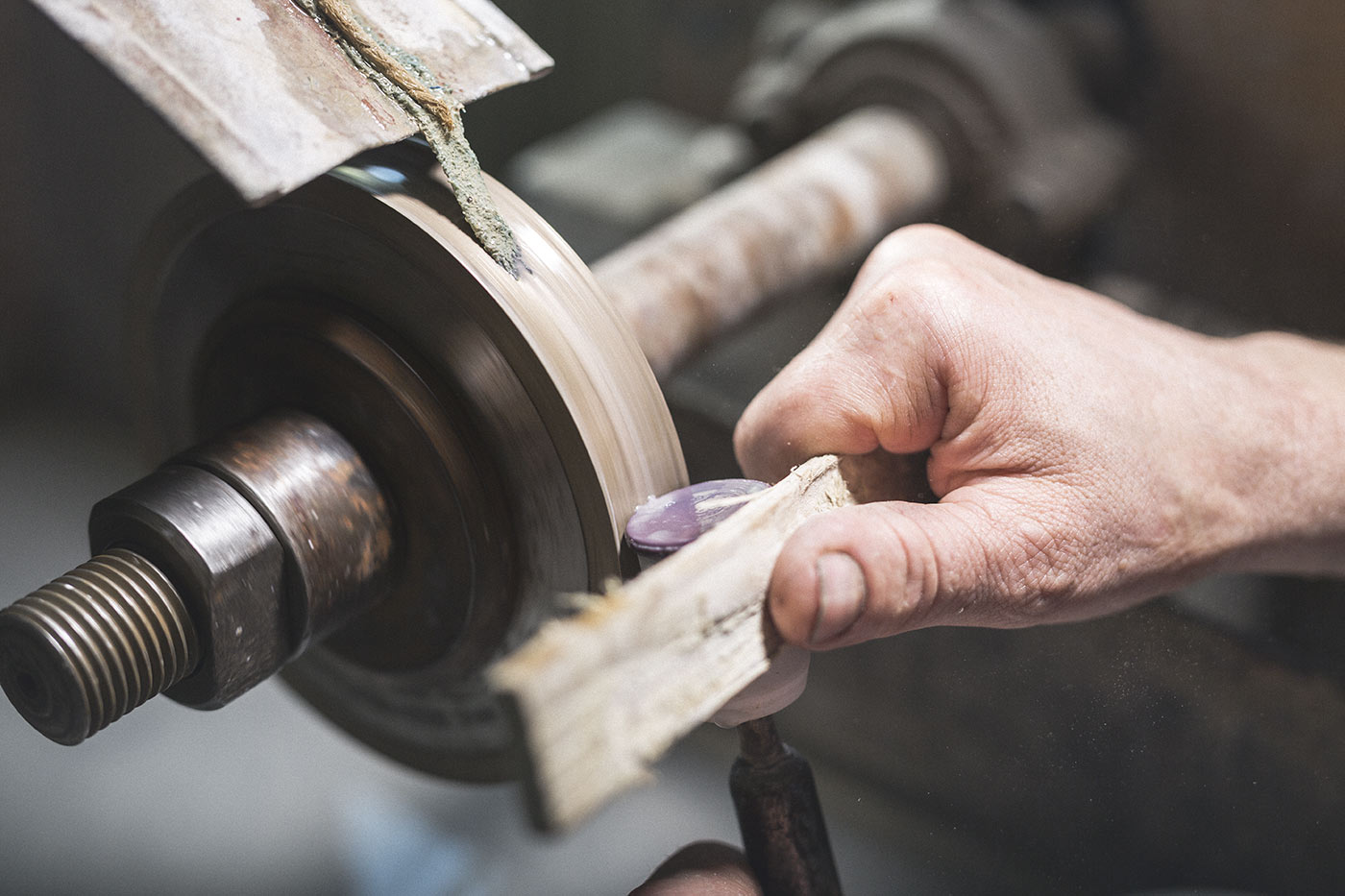
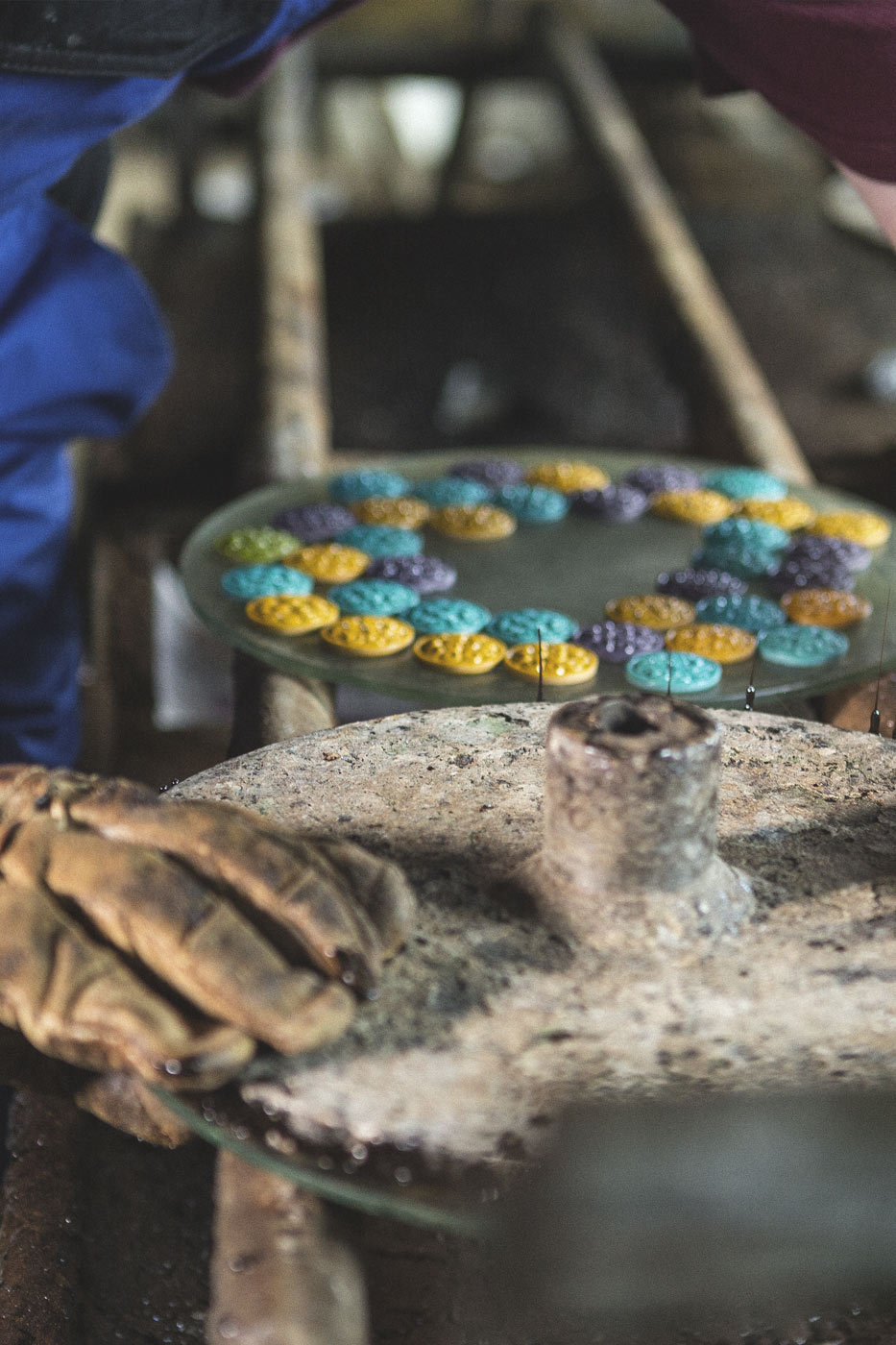
Glass planing
We invite you to take a closer look at how we work the surface of the glass, using a planing process, which we also offer as a separate service. Planing gives the glass elements a smooth surface. Depending on the element’s shape and colour, this could enhance the element’s shine or allow the underside to show through. Once several steps have been completed, the aluminium plates can be hung in the grinding machine. These hold the glass elements ready for rough or pre-grinding. Silicon carbide is used as the abrasive with water.
The height of the glass elements is checked regularly until the right size is reached. Several minutes is allowed for grinding but it can last as little as a few seconds. Next, the plates are ready for finish grinding using sandstone. This stage is also monitored to ensure the glass elements are sufficiently sanded. The final part of the process is to polish the elements using a felt pad and a polishing agent, regularly checking the polish quality. Finally, the plates are cleaned and the glass elements removed. The glass elements then enter the wash system and are cleaned using various agents and ultrasound to remove the swarf and resin.
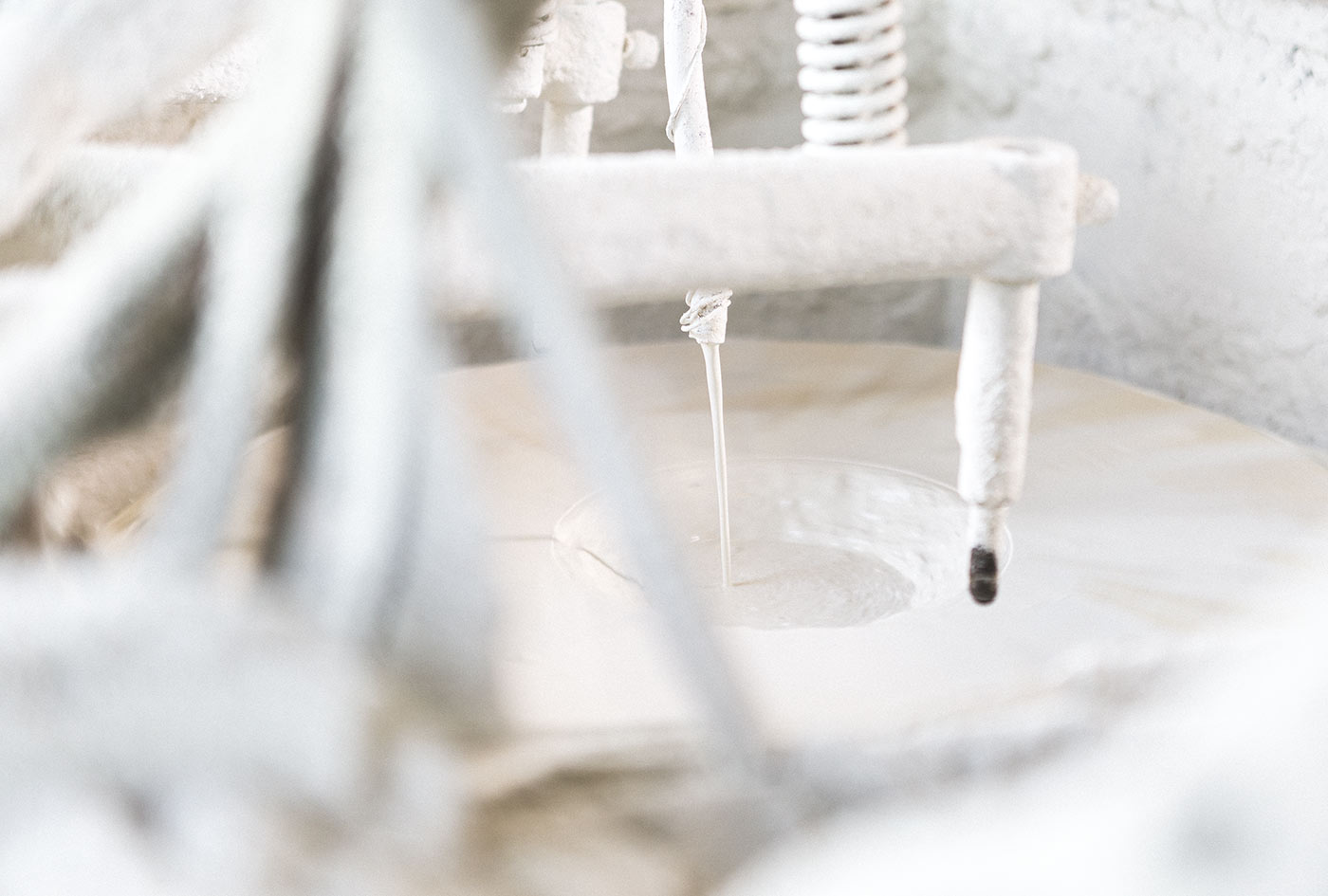
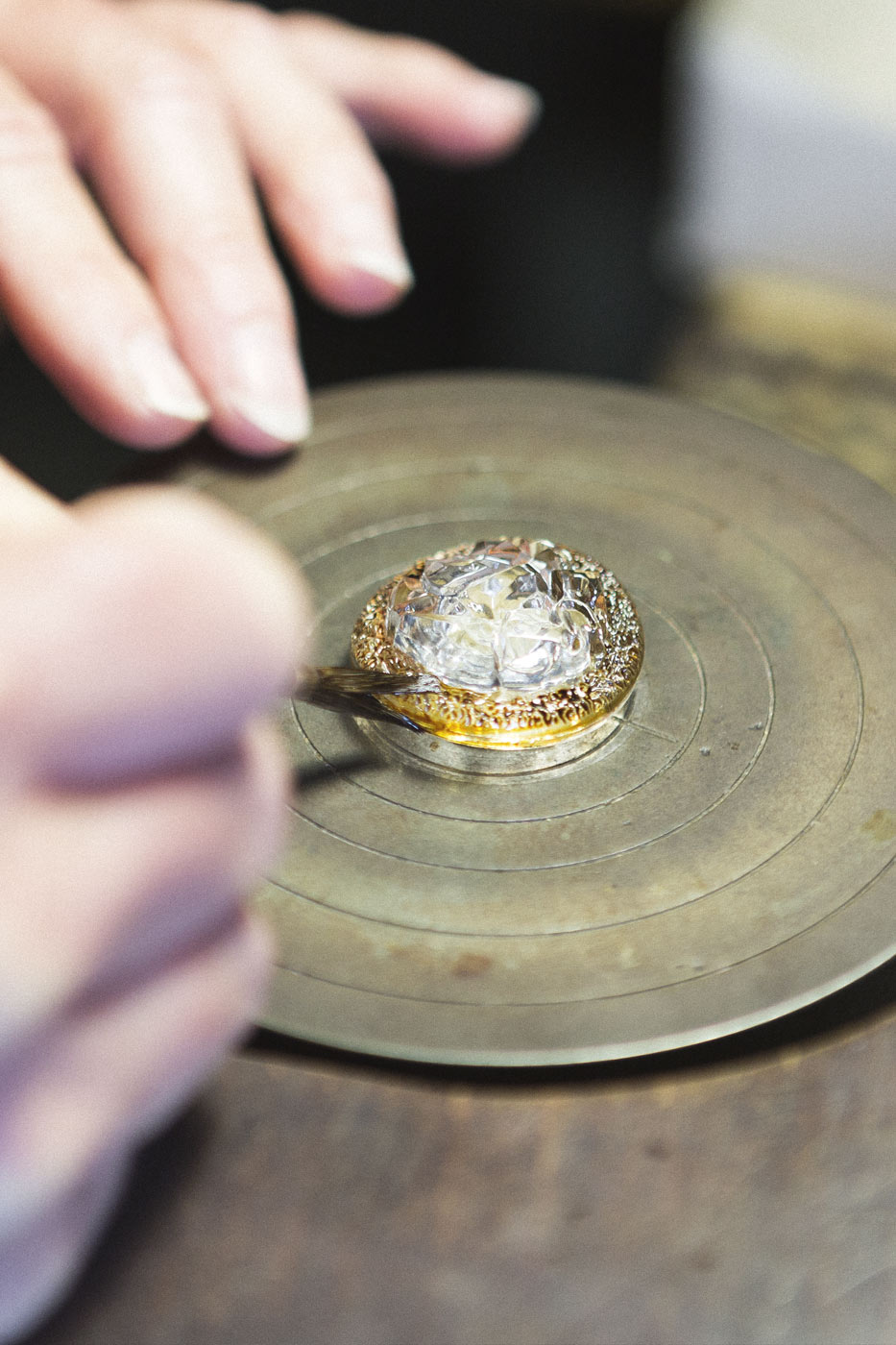
Finishing
The finished glass element can be lent a variety of effects using different surface finishing techniques. These include, coating in gold, platinum, copper, AB and many more. They can be achieved using injection technologies or vacuum coating. If the glass element is then further ground, the recesses maintain the platinum effect and the ground surfaces show the original glass colour. Some of our buttons are also hand painted.
A further option for adding an elegant touch to a glass button or jewellery stone is to decorate it with rhinestones in crystal effect, black or other colours.
